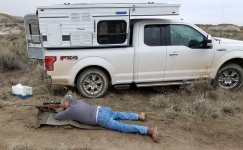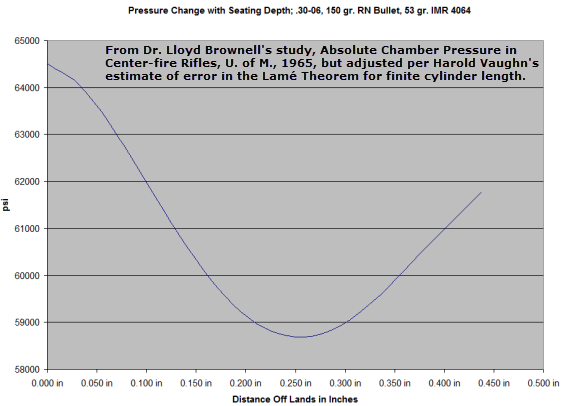You are in good company. The difference between static and kinetic coefficient of friction has been suggested in the past to explain a pressure jump due to bullet contact with the lands. QuickLOAD uses an increase in start pressure to explain pressure from being loaded into the lands.
The flies in the ointment of that explanation are two. First, the jump is missing when you measure peak pressure vs jump to the lands, as Brownell did. This is the reason he came up with the gas bypass hypothesis. Instead of a jump, peak pressure made that gradual transition to the higher peak value shown in the plot, as the bullet was placed nearer the lands. It's a measurement, not an opinion, so it's a little hard to disagree with it having happened.
The other thing to consider is that the military has used angled mirrors over the muzzle of a rifle to get continuous laser distance measurements to the tip of a chambered bullet, and in bigger guns used a Doppler radar to get continuous motion readings, and they found the ignition even motion isn't smooth. That is, there are hesitations and a sort of stuttering of the bullet motion as it goes through working its way from the case to throat to bore. So even with a runup there doesn't seem to be a simple continuous transition into the rifling lands. Instead, the bullet slows and the chamber stretches and a compression wave gets into the steel and all manner of other influences stick there heads into the stew, affecting pressure and velocity.
I'm not saying there is nothing to the friction issue. Using moly and hBN coated bullets with same powder charges as we used for bare jackets, we see a velocity drop, indicating they slid into the rifling with less resistance and built less initial pressure. But we still have to explain the peak pressure measurements Brownell got before we can claim to know what's going on, and the increased friction isn't doing it so far.
Then there is momentum. That's something that does increase with bullet runup. So, how much reaction force is overcome by stopping that momentum? You can get a sense of this from QuickLOAD's velocity vs. distance traveled. QuickLOAD treats acceleration as continuous. In a 0.030" jump to the lands a 30 caliber bullet gets up to about 50 fps in a typical load. If the throat stops a 168 grain bullet going 50 fps in 0.02" of engraving into the lands, the force is 560 lbs. That's enough to get and keep a bullet moving in a bore. However, half that is not. So that predicts a pressure jump should occur between .030 and .015 off the lands when the bullet would stall. We don't see that. Maybe it explains the slope steepening beyond about 0.030", though.
Brownell's actual data points are in the study for all to see. Perhaps it can be argued they were spaced too far apart and the experiment should be redone using a Pressure Trace or a commercial pressure test barrel. Nothing wrong with getting more data to study if someone has the time for it.



